
In 2025, having a clear and effective Affiliate Disclosure Template is essential for anyone engaged in affiliate marketing. This template serves not only as a best practice but also as a crucial compliance piece that helps build trust with your audience and avoids potential legal pitfalls.
Why is an Affiliate Disclosure Template Important?
Here are some key reasons:
- Transparency: Consumers today value transparency. By clearly stating when you receive compensation for recommendations, you foster a sense of trust. A well-crafted Affiliate Disclosure Template communicates honesty about your affiliations.
- Legal Compliance: In many jurisdictions, including the United States, failing to disclose affiliate relationships can lead to penalties. The Federal Trade Commission (FTC) has established strict guidelines that marketers must follow, reinforcing the necessity of an affiliate disclosure.
- SEO Benefits: Search engines prioritize quality content that is straightforward and honest. By using an Affiliate Disclosure Template, you contribute to your website’s credibility, which can improve your SEO rankings over time.
- Brand Reputation: Following ethical practices not only strengthens your credibility but also enhances your brand image. A diligent approach to disclosing affiliate links can make your brand more reputable in the eyes of consumers.
Crafting an Affiliate Disclosure Template involves specific elements that ensure compliance and engagement. Here’s what to include:
Key Components of an Effective Affiliate Disclosure Template
- Clear Language: Avoid jargon. Use simple, straightforward language so your audience understands your message without confusion.
- Prominent Placement: Your disclosure should be easy to find. Consider placing it at the beginning of your content or directly before affiliate links to ensure visibility.
- Personal Touch: Make it relatable. Explain why you recommend certain products or services and how they benefit your audience. This not only clarifies your intention but also enhances engagement.
- Regular Updates: The regulations and expectations surrounding affiliate disclosures can change. Therefore, consistently reviewing and updating your template is vital to stay compliant and relevant.
Consumer Behavior and Trust Trends (2020–2025)
The 2025 landscape is expected to evolve, affecting how disclosures are perceived and implemented. Here’s some data on consumer behavior towards affiliate marketing:
| Year | Trust Level (%) | Consumers Aware of Affiliate Marketing (%) |
|---|---|---|
| 2020 | 63 | 45 |
| 2021 | 67 | 56 |
| 2022 | 70 | 60 |
| 2023 | 73 | 64 |
| 2024 | 77 | 70 |
| 2025 | 80 | 75 |
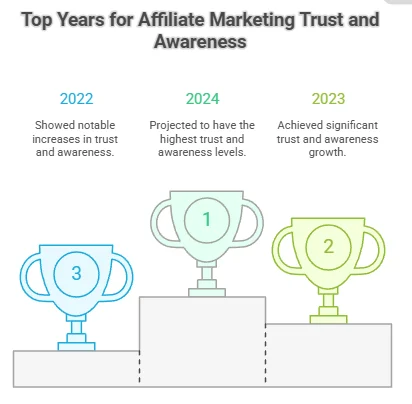
As seen in the table, consumer trust in affiliate marketing is on the rise. This trend highlights the importance of your Affiliate Disclosure Template. By looking ahead to 2025, you should prepare your templates to align with these evolving expectations from consumers.
To ensure your affiliate disclosure template resonates with your audience, you might want to explore additional resources on updated guidelines and best practices. Websites like Federal Trade Commission provide valuable insights into compliance requirements, while platforms like Affiliate Marketing offer tips and templates tailored for marketers.
In an increasingly savvy consumer market, your affiliate disclosure can be your asset. It not only protects you from legal issues but also promotes a healthy relationship with your audience. As you develop or refine your affiliate disclosure template for 2025, remember that your aim is to keep your audience informed, engaged, and most importantly, confident in your recommendations.
Key Elements to Include in Your Affiliate Disclosure
When you promote products through affiliate links on your website, transparency is key. It’s important to inform your audience that you may earn a commission if they click on your links and make a purchase. Here’s what you should consider when crafting an effective affiliate disclosure.
Clear Statement of Affiliate Relationship
Start with a clear statement explaining your affiliate relationship. For example, use language like:
- “Some of the links on this site are affiliate links, which means I may receive a commission if you purchase through them.”
- “I only promote products that I believe will add value to my audience.”
This assures your readers that you have their interests in mind while also being upfront about your potential earnings. Having a solid Affiliate Disclosure Template makes this easy.
Specify the Nature of the Relationship
It’s helpful to specify what kind of relationship you have with the brands you are promoting. Are you an affiliate partner, a sponsored content creator, or a product reviewer? Each has different implications:
- Affiliate Partner: You receive a commission for sales generated through your links.
- Sponsor: The brand pays you for promotion, but you may not receive commissions.
Why You May Use Affiliate Links
Help your audience understand why you choose to use affiliate links. You might include sentences like these:
- “Using affiliate links helps support the site at no extra cost to you.”
- “Your purchases through these links allow me to continue providing free content.”
This context can make your audience more willing to engage with your affiliate links.
Disclosure Placement
Placement of your affiliate disclosure is essential. Ensure it’s noticeable and easy to understand. Here are some effective locations:
- At the beginning of a blog post or article.
- Near the affiliate links themselves.
- In a dedicated “Disclosure” page linked to from the footer of your site.
These placements are crucial to ensure compliance with the Federal Trade Commission (FTC) guidelines.
Use Simple Language
Make sure your language is straightforward and free of jargon. This helps everyone, including those who may not be familiar with affiliate marketing, understand your message. A simple disclosure may read: “I earn a commission if you buy a product through my links.” This keeps it clear and easy to process.
Regular Updates
Affiliate programs can change regularly. Ensure that you update your disclosure periodically to reflect any changes in affiliate partners or commission structures. You want the information to be current and accurate to maintain trust with your audience.
Legal Compliance
Adhering to the FTC’s guidelines is paramount. Here are the key legal obligations:
- Disclose your affiliate relationships clearly.
- Make the disclosure stand out and be readable.
- Update it regularly to ensure accuracy.
For more information, check out the FTC’s Affiliate Marketing Guidelines.
Examples of Effective Disclosures
Here are some general examples of how to format your disclosures:
| Type | Disclosure Statement |
|---|---|
| General Disclosure | This site is reader-supported, meaning we might earn a commission from the products you purchase through our affiliate links. |
| Amazon Associates | Note: As an Amazon Associate, I earn from qualifying purchases made through links on this site. |
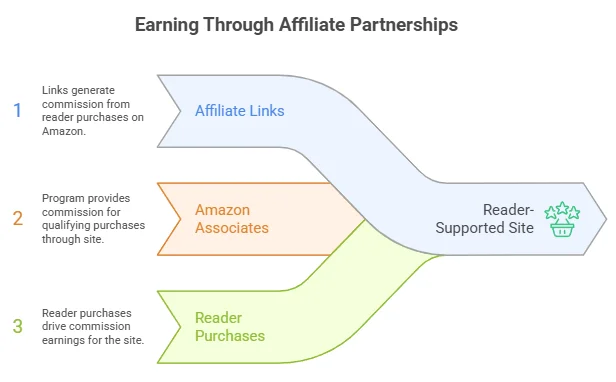
Analyzing examples can help you see how to format your disclosures effectively.
How to Customize Your Affiliate Disclosure for Various Niches
Making an affiliate disclosure is essential for anyone engaging in affiliate marketing. But customizing your disclosure is just as important, especially when considering your audience and niche. Your affiliate disclosure not only fulfills legal requirements but also builds trust with your readers. Here are ways to tailor your affiliate disclosure based on your specific niche.
Understanding Your Niche
Before you customize your affiliate disclosure, it’s crucial to grasp what niche you are working in. Different niches have unique expectations and standards regarding transparency. Take time to analyze the following.
- Audience Expectations: Know what your audience expects in terms of transparency. Different groups may react differently to affiliate disclosures.
- Content Type: Depending on whether you write blog posts, videos, or social media updates, your approach to disclosures may change.
- Legal Regulations: Be aware of how laws like the FTC guidelines apply to your niche. Some sectors may face more scrutiny than others.
Customizing Your Affiliate Disclosure
Your Affiliate Disclosure Template should be straightforward and relatable. Personalizing your statement can grab attention while ensuring compliance. Here are tips on how to tweak your disclosure:
- Be Clear and Concise: Regardless of the niche, clarity is paramount. Avoid jargon and keep it simple. For instance: “Some of the links on this website are affiliate links. If you click and make a purchase, I may earn a small commission at no extra cost to you.”
- Align with Your Brand Voice: Your disclosure should reflect your brand’s tone. If you’re in a playful niche, feel free to add a light-hearted touch. Conversely, a professional niche might require a more formal approach.
- Use Visuals When Applicable: In some cases, using infographics or icons can aid understanding. These can effectively engage users and highlight your disclosure without being too verbose. For example, a small money icon next to affiliate links can signify they are sponsored.
- Provide Context: Context matters in various niches. For example, in health and wellness: “I only recommend products that I’ve personally used and found beneficial. Clicking these links helps support my ongoing efforts in providing valuable content.”
Implementing Your Disclosure Across Platforms
Where you share your affiliate links impacts how you implement your disclosure. Different platforms require distinct approaches:
Blogs and Websites
Make sure the disclosure is visible. This can be placed at the beginning of the post, just before the affiliate link, or in the footer of the page.
Social Media
Use hashtags like #ad or #affiliate to indicate sponsorship in your posts. This is particularly useful on platforms like Instagram or Twitter, where character limits are present.
Videos
If your niche includes video content, verbally disclose that your links are affiliate links. Including a graphic overlay with your disclosure during specifics helps reinforce this message.
Examples of Niche-Specific Disclosures
Here are some examples that may inspire your own disclosure:
| Niche | Example Disclosure |
|---|---|
| Travel | “Some links in this travel guide are affiliate links. If you book using my links, I may earn a small fee that helps me keep this site running!” |
| Beauty | “This post contains affiliate links to products I truly love. Shopping through these links supports my channel and allows me to continue creating.” |
| Finance | “Links included in this article are affiliate links. I may earn a commission if you sign up through them. I only recommend tools I believe in!” |
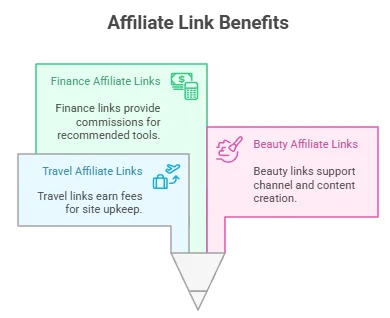
When preparing your affiliate disclosure, always remember the importance of transparency. Taking the time to personalize your disclosure according to your niche not only fulfills necessary guidelines but also establishes a solid trust base with your readers. For more in-depth insights on affiliate disclosures, visit FTC Guidelines or check out Affiliate Marketer Training.
Common Mistakes to Avoid When Creating an Affiliate Disclosure
Creating an affiliate disclosure is a crucial step for anyone engaging in affiliate marketing. Whether you’re a seasoned marketer or just starting out, avoiding common pitfalls ensures that your audience trusts you and understands your financial relationships. Below are some vital mistakes to sidestep when crafting your Affiliate Disclosure Template.
Neglecting Transparency
One of the most significant errors is failing to be transparent about affiliate relationships. It’s essential to explicitly state that you may earn a commission if readers make purchases through your links. Readers appreciate honesty and clarity. If you’re looking for a sample format, the FTC’s guidelines provide helpful insights.
Using Complicated Language
Another frequent mistake is using jargon and complicated terms in your disclosure statement. Your audience should easily understand what you’re saying. Aim for straightforward and clear language; for example:
- “Some links may be affiliate links.”
- “I may earn a small commission at no extra cost to you.”
Keeping it simple enhances reader trust and engagement.
Inadequate Placement
Where you place your affiliate disclosure matters. Placing it at the very bottom of a lengthy post or in tiny print can lead to inadvertent non-compliance. Instead, consider these strategies:
- Position it within the first few paragraphs of your article.
- Include it directly above the affiliate links.
- Add a dedicated disclosure page that’s easy to access.
Neglecting to Update It Regularly
If your affiliate relationships change, your disclosure must reflect those changes. Outdated disclosures can mislead your audience and lead to trust issues. Regularly review and revise your disclosure to ensure it accurately describes your current affiliate relationships. A good practice is to set a reminder to check your disclosures every few months.
Failing to Include All Relevant Links
Sometimes creators get lazy and only disclose select affiliate links. Every link that could earn you a commission must be included. Failing to disclose certain links can violate FTC regulations and damage your credibility. Here’s a checklist to ensure you cover all your bases:
- Review all affiliate programs you’re involved with.
- Make a list of all links requiring disclosure.
- Create a comprehensive disclosure statement that covers all affiliate links.
Not Being Personal
A common mistake is making disclosures sound generic. Always personalize your disclosure to resonate with your audience. For instance, share why you recommend a product or how it has benefited you. Your readers will appreciate your personal experience, leading to better engagement.
Overlooking the Importance of Page Readability
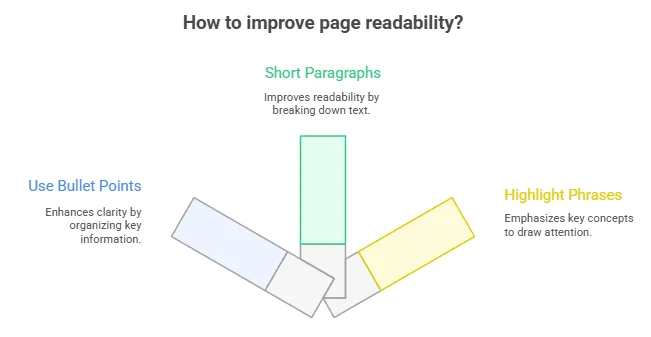
Dense paragraphs of text can make it difficult for readers to comprehend your message. Ensure your affiliate disclosure is formatted appropriately for readability:
- Use bullet points for key information.
- Break text into short paragraphs.
- Highlight important phrases in bold to draw attention.
Ignoring SEO Best Practices
While it’s vital to be compliant with FTC rules, it’s also important to optimize your affiliate disclosure for SEO. Use relevant keywords to improve your page’s visibility. For example, including phrases like “Affiliate Disclosure Template 2025” can enhance your chances of appearing in search results. Remember, balancing readability with SEO is crucial.
Disregarding Audience Education
Many creators forget that educating your audience about affiliate marketing can bolster trust. Consider creating a brief section or video explaining what affiliate links are, and how they help support your work while providing resources for your readers. Link to reputable sites to provide additional context, such as Investopedia’s explanation of affiliate marketing.
Legal Implications of Not Using an Affiliate Disclosure Template in 2025
As online platforms grow, affiliate marketing continues to play a vital role in many business strategies. However, failing to use an Affiliate Disclosure Template can lead to significant legal implications. In 2025, content creators, bloggers, and marketers must understand the risks involved in neglecting this aspect of affiliate marketing. Knowing about these legalities ensures you protect yourself and your business while maintaining transparency with your audience.
Affiliate disclosures are not just a good practice; they are legally required in many jurisdictions. The Federal Trade Commission (FTC) in the United States has specific guidelines that mandate users to disclose any relationships with affiliate programs. If you don’t comply with these guidelines, you could face serious legal repercussions, including hefty fines. Fines can range from a few thousand to over a million dollars, depending on the severity and frequency of non-compliance.
Using an affiliate disclosure template helps you craft a statement that meets legal requirements. A well-structured template can guide you in disclosing your affiliate relationships clearly and concisely. Here are some key components that should be included in your affiliate disclosure:
- Your relationship: State openly that you earn commissions or compensation from the sales generated through links on your site.
- Types of products: Mention the types of products or services you may be promoting as an affiliate.
- Your intent: Clarify that your intent is to provide honest opinions, recommendations, or analysis regardless of compensation received.
- Visibility: Ensure that this disclosure is placed prominently on your site, ideally before the affiliate links.
In 2025, the regulations governing affiliate marketing are expected to tighten further. Various new consumer protection laws might emerge, reflecting a growing interest in influencer transparency. Not only can non-compliance result in legal penalties, but it could also damage your reputation among your audience. Users are becoming increasingly aware and skeptical; they appreciate transparency when a marketer promotes a product. Outdated or insufficient disclosures can lead to a lack of trust, resulting in decreased engagement or lost sales.
The nonprofit organization, National Law Review, outlines that affiliate marketers needing to remain compliant will have to regularly update their disclosures. Staying informed about the latest legal changes can ensure that you remain on the right side of the law.
Penalties for Non-Compliance
Here are some penalties for failing to use an Affiliate Disclosure
| Type of Penalty | Description |
|---|---|
| Monetary Fines | Fines from regulatory bodies can be imposed for non-disclosure. |
| Legal Charges | Potential lawsuits for deceptive marketing practices. |
| Reputation Damage | Loss of consumer trust resulting in declining sales. |
| Business Suspension | Some businesses may get suspended from affiliate networks. |
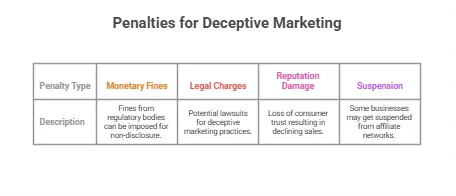
Using an affiliate disclosure template not only keeps you compliant but also shows your audience that you value integrity in your business practices. This credibility fosters a sense of loyalty among your followers, which is invaluable in a competitive digital landscape. Remember, the trust of your audience should be one of your top priorities.
If you find yourself unsure about how to create or implement an affiliate disclosure template, consider reaching out to legal experts or using online resources. Websites such as LegalZoom provide guidance for small businesses navigating legal requirements. You may also find template samples and advice on platforms like TermsFeed.
Understanding the legal ramifications of not using an affiliate Disclosure Template is essential for anyone involved in affiliate marketing. It protects you and establishes a lasting relationship with your audience built on trust and honesty. Protect your business and ensure compliance by using a disclosure template tailored to your needs.
Conclusion
Navigating the world of affiliate marketing in 2025 demands a keen understanding of how to establish trust and maintain compliance. An Affiliate Disclosure Template is not just a helpful tool; it’s a fundamental requirement for ethical marketing practices. By incorporating the key elements—such as clear language, position statements, and honest intentions—you set the stage for transparency with your audience.
Customization is crucial; adapting your affiliate disclosure to fit your niche ensures relevance and engagement. Whether you’re in fashion, technology, or travel, tailoring your message will resonate with your specific audience, enhancing their trust and understanding of your intentions. Additionally, being aware of common pitfalls, such as vague wording or hiding disclosures, can safeguard you from potential legal issues and enhance credibility.
Neglecting the legal implications of an affiliate disclosure in 2025 can lead to serious consequences. Regulatory bodies are increasingly vigilant about compliance, and not adhering to these guidelines could expose you to fines or damage your brand reputation. Recognizing the importance of a solid template not only protects you legally but also fortifies your relationship with your audience.
Ultimately, creating a well-thought-out and compliant affiliate disclosure is a crucial step in fostering trust with your readers. It allows you to engage authentically while adhering to regulations that can safeguard your business. For successful affiliate marketing, prioritizing transparency through a comprehensive disclosure template is a step you can’t afford to overlook in 2025.